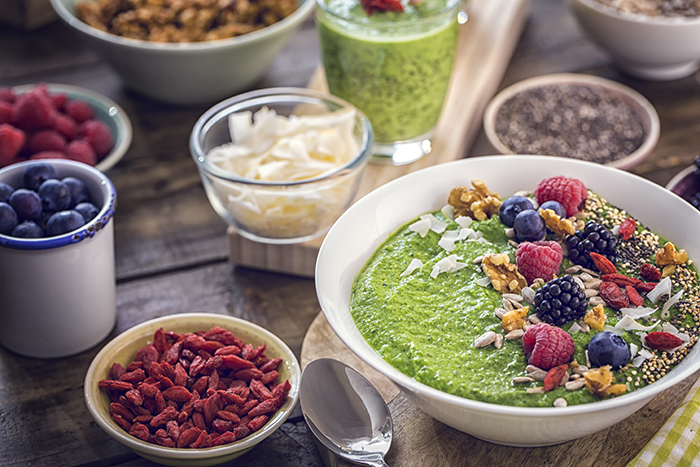Are Superfoods Worth the Money?

Despite the hype and hyperbole surrounding superfoods, Andrea Meskie, MS, RD, LD/N, a clinical dietitian with the University of Miami Health System, is not impressed.
“It’s purely a marketing strategy. If you really compare the nutritional analysis of superfoods with other healthful foods, you could get all the nutrients you need by eating a variety of fruits, vegetables, whole grains, and other wholesome foods.”
Affordable, appetizing alternatives
That’s right – you don’t have to splurge on an overpriced package of goji berries, cacao, microgreens, or other precious commodities to improve your health. “You can reap all of the benefits of goji berries by eating blueberries,” Meskie says. A breakfast smoothie made with blueberries, spinach, and other fruit is a great way to overcome a nutritional shortfall that affects most Americans.
“I personally aim to eat the recommended five fruits and vegetables a day. That amount has been found to reduce overall mortality by 13%.”
A CDC study showed that only one in 10 adults eat the recommended daily amount of fruits and vegetables. To pack more protein into your smoothie, soup, or salad, try adding hemp seed. Three tablespoons of hemp seed contain 10 grams of plant-based protein, she says.
Another easy, low-cost breakfast option is Greek yogurt with a dash of chia seed and a handful of walnuts and blueberries. It qualifies as a superfood since it’s packed with probiotics, protein, fiber, and other nutrients.
To replicate the “mouth feel” and spicy taste of microgreens without blowing your budget, try thinly sliced radishes on a sandwich. Add lettuce, tomato, and other veggies for a healthy boost.
Eat the rainbow
Meskie encourages patients to “eat a variety of color compounds.” The more colorful the food, the more phytonutrients it contains.
If one food qualifies as a dietitian’s dream, it’s the sweet potato. “It’s packed with nutrients and fiber.” Carrots also qualify, as do red peppers, which contain more vitamin C than oranges, Meskie says. Toss those veggies on a kale or spinach salad, and “you just increased your folate content.”
Color counts with grains, too.
“Nobody gets nearly enough fiber. It’s important for regularity and removing waste. Choose whole-grain bread and grains instead of processed white flour products made with refined grains. For example, white rice has been stripped of the grain’s outer layer, which contains all of the vitamins.”
Easy ways to eat healthily
Even if a product claims to be a superfood, no one food solves all health issues. Improving your diet doesn’t have to be difficult, however. If you usually eat a fried egg and bacon for breakfast, try a veggie scramble by adding peppers and chopped broccoli to eggs.
For dinner, eat lean, baked chicken or fish with a bit of seasoning, a side of veggies, or a salad. Snack on an apple or banana instead of chips. Choose whole-wheat bread over white, a sweet potato over a white potato. Don’t overlook the lowly legume – beans are loaded with protein, fiber, and vitamins. Nuts, salmon, and avocados contain omega-3, an essential nutrient for heart and brain health.
Knowledge is power
Meskie believes that our bodies use what we eat to our benefit or disadvantage. “Knowledge is power. The more you know about nutrition, the more consciously you decide what to put on your plate.”
And the more you know, the less likely it is that marketing will rule your meals.
Nancy Moreland is a regular contributor to UMiami Health News. She has written for several major health care systems and the CDC. Her writing also appears in the Chicago Tribune and U.S. News & World Report.
Tags: Andrea Meskie, superalimentos
